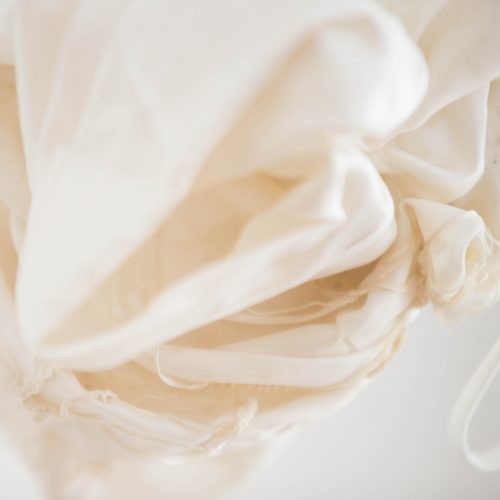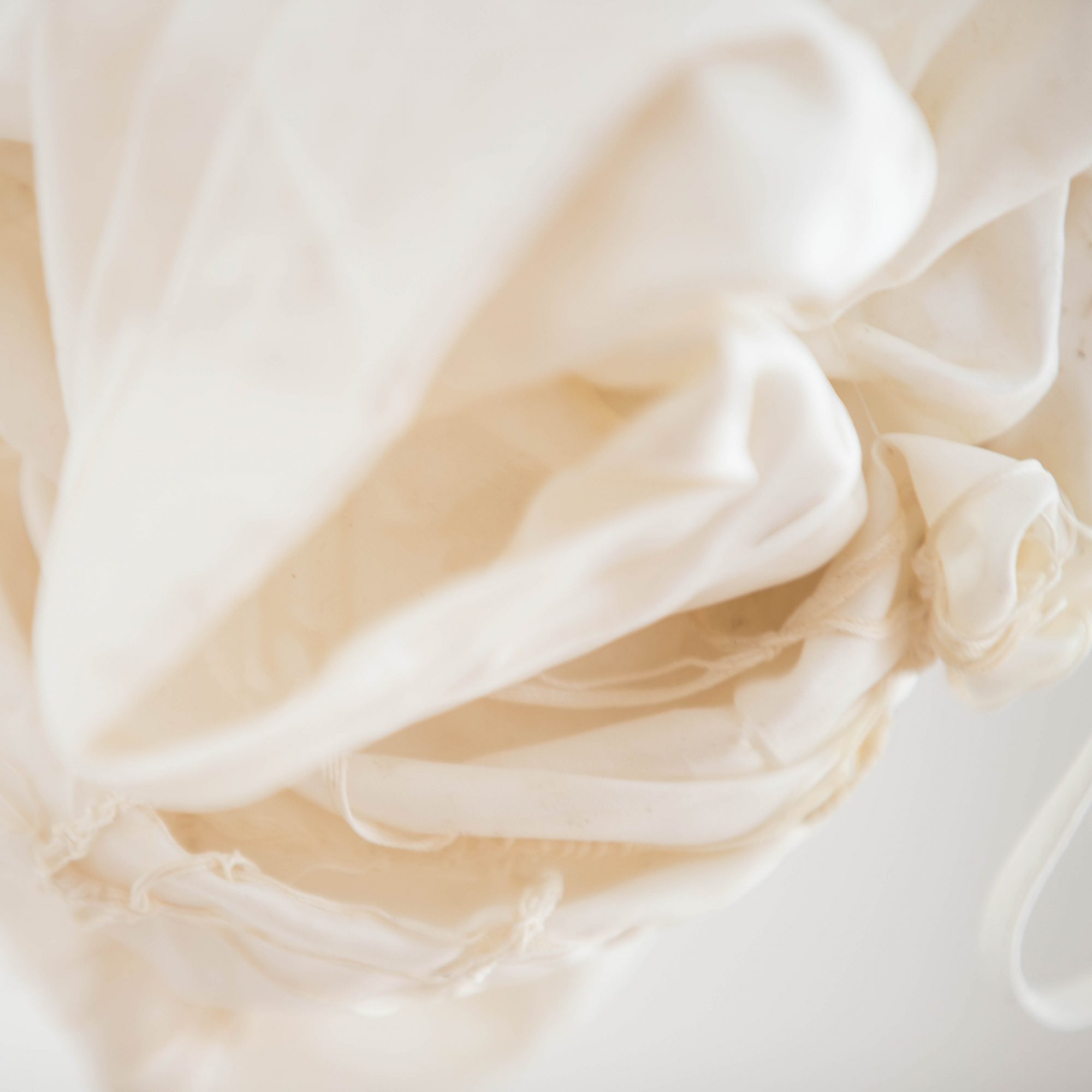the silk skin










4c-Print auf Leinwand. je 60 x 60 cm
2018. 4c-print on canvas. 60 x 60 cm each
[D] Diese maßlose Anziehung der Körper und ihr großer Krieg. Wie sie sich anziehen, und wie sie ausziehen in ihren Krieg miteinander, wie sehr sie sich abstoßend finden, wie sehr sich abstoßen voneinander, schier unendliche Kräfte bewegen die Körper. Wie anziehend sie sich finden. Nicht nur sensibel gehen sie miteinander um, wenn das Sensible das nur Zärtliche und Beschwichtigende ist. Die Körper streiten, sie überwerfen sich miteinander und zerstreuen sich in alle Winde. Sie bilden sogar Antikörper, um einander zu bekämpfen. Die seidenen Körper von Judith Klemenc zeigen die ganze elastische Kraft der Seide und ihrer Faltenwürfe. In seinem Werk Die Falte[1] wählt der französische Philosoph Gilles Deleuze die Perspektive des Barock und der Philosophie Leibniz’: Seelen können einen Körper haben als Ausgangspunkt seiner philosophischen Untersuchungen der Falte. Leibniz, der bereits davon ausging, dass der Körper den Seelen gehöre wie ein Eigentum, wird für Deleuze der zentrale Denker der Falte, des Faltens, der Faltungen – Ähnlichkeiten und Indifferenzen treten damit als weitere Denkfiguren zur Falte hinzu. Falten ähneln sich, sie sind schwer zu differenzieren – eine Falte von einer anderen zu unterscheiden ist oft ein Ding der Unmöglichkeit; Falten sind indifferent und zugleich ist es ihre Bewegung sich voneinander zu differenzieren, auszufalten: sie sind in-Differenz zu einander. Der Körper – so Deleuze mit Leibniz – verschmilzt nicht mit der Seele oder integriert sich als Materie, als Sinnliches innerhalb des Seelenterrains. Der Körper bleibt der Seele äußerlich. Die Körper gehören zwar (zu) den Seelen, jedoch unterscheiden sich diese beiden Entitäten. Die Seelen, von Leibniz als vernünftige Monaden gedacht, sind von einem vereinheitlichenden Prinzip strukturiert, die Körper hingegen sind in ihrer Struktur und Materialität von einem vielgestaltigen und vielfältigen Gemenge an Kräften bestimmt, die unkontrollierbar und unbegrenzbar wirken. Dennoch ähneln sich die Falten der Seele und die Falten der Körper. Gilles Deleuze entwirft mit der Metapher eines zweigeschossigen Hauses, ein Bild für die Weise wie Körper und Seelen beieinander wohnen. In der unteren Etage wohnt die Materie, in der oberen Etage ist die Seele eingeschlossen. Allein die untere Etage hat Öffnungen, die Welt dringt in die Wohnstätte der Materie – die Welt findet in der Materie ihre Realisierung, sie schreibt sich in die Falten der Materie ein, so wie die seidene von Judith Klemenc ineinander gefaltete verschiedene Schichten zeigt. Will man die Unterscheidung von Leib und Seele näher bestimmen, produziert jede Unterscheidung weitere Falten, deren Bewegung sich in Unendlichkeit weiterfaltet. Orientierung stiftet das Prinzip der Ähnlichkeit in diesem Meer der Falten. Wie im seidenen Faltenwurf kräuselt sich ein Versprechen von Unendlichkeit.
[1] DELEUZE, Gilles: Die Falte. Leibniz und der Barock. Suhrkamp Verlag, Frankfurt am Main 1995, S. 34 ff.
[E] This exorbitant attraction of bodies and their great war. How they dress, and how they undress in their war with each other, how much they find each other repulsive, how much they repel each other, almost infinite forces move the bodies. How attractive they find themselves. Not only do they treat each other sensitively, if the sensitive is the only tender and appeasing. The bodies argue, they throw themselves over each other and scatter to the four winds. They even form antibodies to fight each other. Judith Klemenc’s silk bodies show all the elastic power of silk and its draperies.
In his work Die Falte[1], the French philosopher Gilles Deleuze chooses the perspective of the Baroque and the philosophy of Leibniz: souls can have a body as the starting point for his philosophical investigations of the wrinkle. Leibniz, who already assumed that the body belongs to the souls like a property, becomes for Deleuze the central thinker of the fold, of folding, of the folds – similarities and indifferences are thus added to the fold as further figures of thought. Folds are similar, they are difficult to differentiate – to distinguish one fold from another is often a thing of impossibility; folds are indifferent and at the same time it is their movement to differentiate themselves from each other, to unfold: they are in-difference to each other. The body – so Deleuze with Leibniz – does not merge with the soul or integrate itself as matter, as sensual within the soul’s terrain. The body remains external to the soul. Although the bodies belong (to) the souls, these two entities are different. The souls, thought of by Leibniz as rational monads, are structured by a unifying principle, whereas the bodies are determined in their structure and materiality by a multiform and manifold mixture of forces, which have an uncontrollable and unlimited effect. Nevertheless, the folds of the soul and the folds of the bodies are similar. Using the metaphor of a two-story house, Gilles Deleuze creates a picture of the way bodies and souls live together. The lower floor is where matter lives, the upper floor is where the soul is enclosed. Only the lower floor has openings, the world penetrates into the dwelling place of matter – the world finds its realization in matter, it inscribes itself in the folds of matter, just as the silken one by Judith Klemenc shows different layers folded into each other. If one wants to define the distinction between body and soul more precisely, each distinction produces further folds, the movement of which continues to unfold in infinity. Orientation creates the principle of similarity in this sea of folds. As in the silken drapery, a promise of infinity ripples out.
[1] Gilles Deleuze: Die Falte. Leibniz und der Barock. Suhrkamp Verlag, Frankfurt am Main 1995, p. 34 ff.
Elisabeth Schäfer
